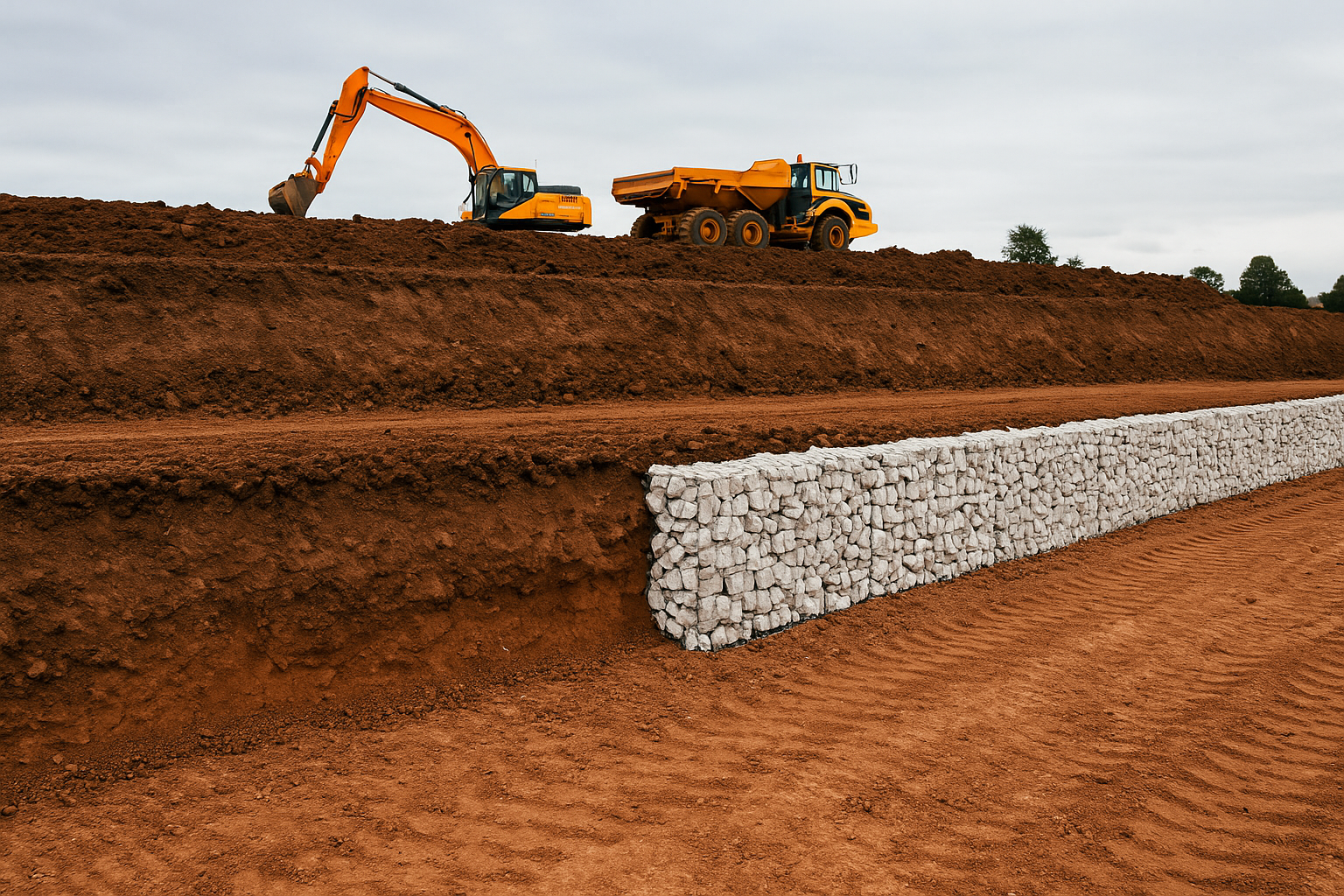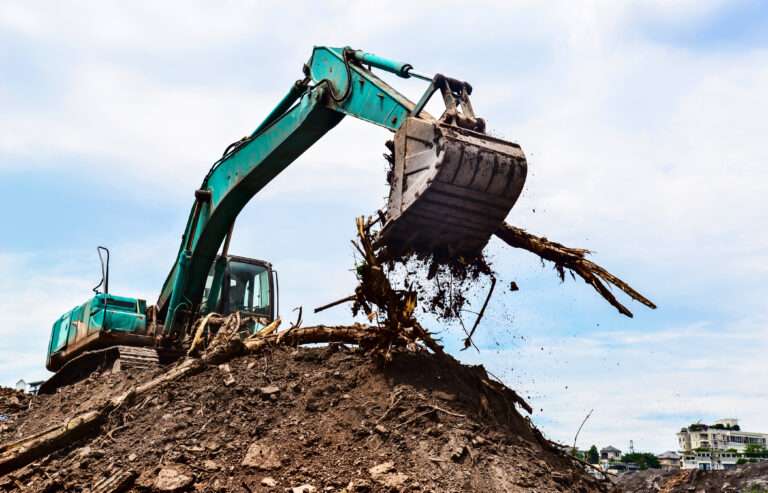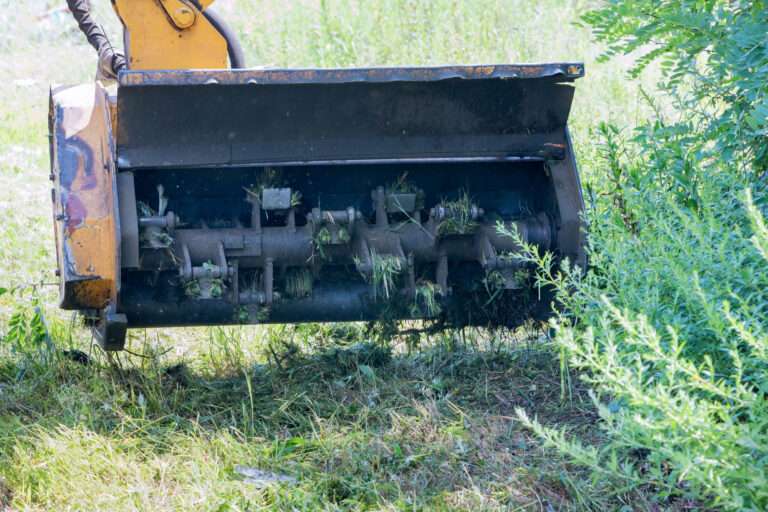Precision Earthworks: Cut and Fill Techniques for Commercial Sites
Shaping Land, Building Possibilities
In commercial development, everything starts with the land. Before a single brick is laid or a foundation poured, the terrain must be ready—level, stable, and engineered for success. That’s where cut and fill techniques come in.
These tried-and-tested earthmoving strategies do far more than shift soil. They create the groundwork for every safe, cost-effective, and sustainable development. Whether you’re preparing a new business park, logistics hub, or retail complex, understanding the fundamentals of cut and fill operations is key to delivering results on time and within budget.
What Are Cut and Fill Techniques?
Cut and fill is the process of reshaping the ground by excavating high areas (“cut”) and using that material to raise lower areas (“fill”). The goal is to balance the terrain, achieving a level platform that supports construction and infrastructure needs.
In commercial environments, these techniques are indispensable. They underpin everything from car parks and access roads to large-scale warehousing and drainage-sensitive green spaces.
Why Cut and Fill Matters in Commercial Projects
A poorly balanced site can cost more than just money. It increases environmental impact, risks structural instability, and leads to project delays.
Well-executed cut and fill work offers clear advantages:
- Reduces material haulage: Balanced sites use soil already on-site, cutting transportation costs.
- Accelerates construction: A ready-to-build platform speeds up the follow-on trades.
- Improves sustainability: Lower fuel use and waste contribute to greener construction practices.
- Mitigates risk: Stable, well-graded surfaces reduce the chance of subsidence or drainage failure.
How the Process Works
Successful cut and fill operations rely on data, precision, and expertise. Here’s what the typical workflow includes:
1. Site Surveying
A detailed topographical survey maps out the land’s contours, high points, and depressions. This data is fed into a Digital Terrain Model (DTM) to simulate how best to reshape the site.
2. Earthwork Design
Engineers assess how to balance soil volumes, aiming to move as little soil as necessary to create a flat and stable working platform.
3. Machine Control & GPS Grading
On-site, modern machinery guided by GPS ensures every centimetre is cut or filled to the design specification, reducing manual checking and rework.
4. Compaction & Grading
Compacting filled material is essential to maintain strength and avoid settlement. Final grading shapes the site to manage water runoff and support surface finishes.
Techniques Tailored for Commercial Settings
Laser-Guided Equipment
When precision is paramount—like for foundations or drainage zones—laser-guided grading equipment ensures level surfaces.
Slope Management & Reinforcement
In larger developments with sloping ground, geotextiles and gabion baskets may be used to stabilise slopes and create usable plateaus.
On-Site Soil Conditioning
Rather than importing fresh fill, site-won material is often tested and treated to meet strength and drainage requirements, saving money and reducing waste.
Phased Earthworks
Staging cut and fill over multiple zones helps developers optimise workflows, particularly on expansive or complex sites.
Cut and Fill FAQs
Is cut and fill suitable for brownfield sites?
Yes—though additional steps like contamination checks and soil testing may be required.
What happens if soil needs to be removed?
Excess material can be transported off-site or reused elsewhere, depending on environmental constraints and planning conditions.
Do cut and fill operations delay the project?
Not when planned effectively. With the right expertise and equipment, they often shorten overall timelines by delivering a perfectly prepped site.
Can cut and fill improve drainage?
Absolutely. Proper levelling and gradient control are crucial to directing water away from buildings and preventing surface flooding.
Real-World Applications in Commercial Development
At Killingley, we’ve deployed cut and fill techniques across countless commercial environments, including:
- Business parks: Level access roads, car parks, and building pads.
- Retail outlets: Precise levelling for shop units and customer-facing spaces.
- Industrial estates: Hardwearing platforms for heavy-duty logistics operations.
- Public infrastructure: Road realignment and land preparation for utilities.
Every project is different, but the principles remain the same: achieve balance, minimise movement, and deliver lasting value.
The Sustainable Choice
Modern cut and fill operations are not just efficient—they’re sustainable too. By reusing soil on-site, avoiding unnecessary waste, and using low-emission equipment, contractors can make a measurable difference to the environment.
When incorporated into broader environmental strategies like SuDS, biodiversity net gain or BREEAM, cut and fill methods become powerful tools for greener building.
Conclusion: Balance is Everything
Cut and fill techniques are about more than just digging and dumping soil. They’re about achieving the perfect balance—between form and function, speed and stability, cost and quality. For commercial projects, that balance can be the difference between a smooth launch and a costly setback.
With an experienced partner like Killingley, you gain access to proven expertise, cutting-edge technology, and a deep understanding of technical earthworks. We plan every cut and fill operation with care, ensuring your commercial site is ready to support success—today and in the future.









